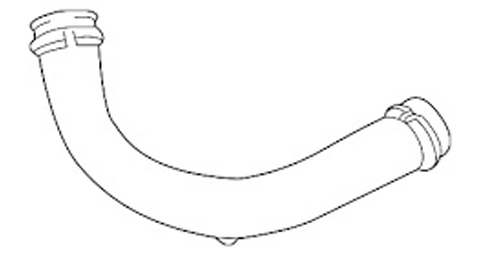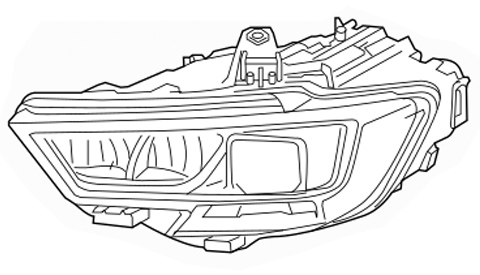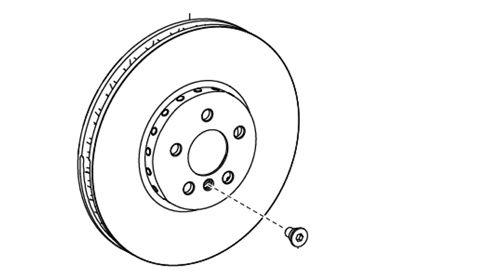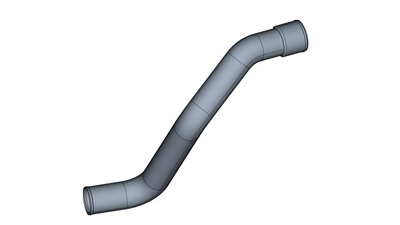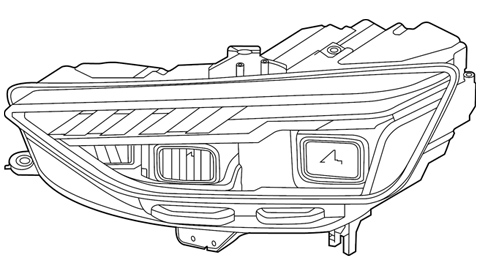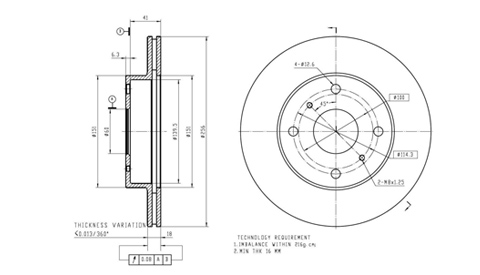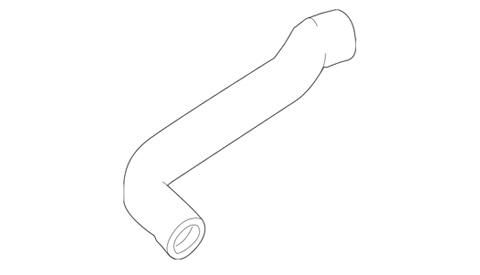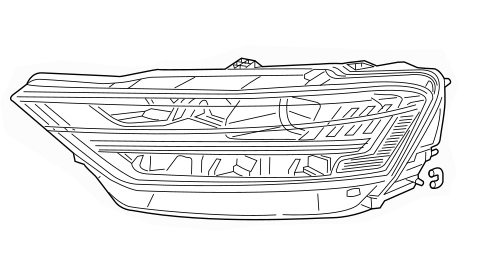-
Array
(
[0] => Array
(
[id] => 1
[siteid] => 1
[parentid] => 0
[parentstr] => 0,
[infotype] => 0
[classname] => Home
[navname] => Home
[alias] =>
[english] =>
[linkurl] => /
[relinkurl] => index.html
[picurl] =>
[picwidth] =>
[picheight] =>
[colorval] =>
[boldval] =>
[seotitle] => Automotive Lamp suppliers,Led Headlight solutions,Luz Led Para Moto price,Headli
[keywords] => Automotive Lamp suppliers,Led Headlight solutions,
[description] => IV Auto Parts is a Automotive Lamp suppliers, provides Led Headlight solutions,Luz Led Para Moto price,Headlights For Car fittings.
[orderid] => 1
[isnav] => true
[checkinfo] => true
[url] => index.html
[child] => Array
(
)
)
[1] => Array
(
[id] => 2
[siteid] => 1
[parentid] => 0
[parentstr] => 0,
[infotype] => 0
[classname] => About Us
[navname] => About Us
[alias] =>
[english] => We Make Fence Idea
[linkurl] => about.php
[relinkurl] => about.html
[picurl] =>
[picwidth] =>
[picheight] =>
[colorval] =>
[boldval] =>
[seotitle] => Car Head Lamp Agencies,vehicle Headlamp Wholesale,car Head Lamp Price; IV Auto P
[keywords] => car head lamp agencies,vehicle headlamp wholesale,
[description] => IV Auto Parts, built in Hongkong and based in mainland China, has specialized
in developing and exporting high quality fencing system since 2009.
[orderid] => 2 [isnav] => true [checkinfo] => true [url] => about.html [child] => Array ( [0] => Array ( [id] => 10 [siteid] => 1 [parentid] => 2 [parentstr] => 0,2, [infotype] => 0 [classname] => Our Culture [navname] => Our Culture [alias] => [english] => [linkurl] => about.php?cid=10 [relinkurl] => about-10-1.html [picurl] => [picwidth] => [picheight] => [colorval] => [boldval] => [seotitle] => [keywords] => [description] => [orderid] => 10 [isnav] => true [checkinfo] => true [url] => about-10-1.html [child] => Array ( ) ) [1] => Array ( [id] => 11 [siteid] => 1 [parentid] => 2 [parentstr] => 0,2, [infotype] => 2 [classname] => Our Team [navname] => Our Team [alias] => [english] => [linkurl] => team.php [relinkurl] => team.html [picurl] => [picwidth] => [picheight] => [colorval] => [boldval] => [seotitle] => [keywords] => [description] =>
We have been supplying Replacement Headlight assembly,Side Light,Tail Lights,driving Lights,Led Fog,Interior Light,Light Accessories,since 2009, and thanks to the contribution of our professional team, customers across the world thumb up to IV Aut [orderid] => 11 [isnav] => true [checkinfo] => true [url] => team.html [child] => Array ( ) ) [2] => Array ( [id] => 12 [siteid] => 1 [parentid] => 2 [parentstr] => 0,2, [infotype] => 0 [classname] => Reference List [navname] => Reference List [alias] => [english] => [linkurl] => reference.php [relinkurl] => reference.html [picurl] => [picwidth] => [picheight] => [colorval] => [boldval] => [seotitle] => [keywords] => [description] => [orderid] => 12 [isnav] => true [checkinfo] => true [url] => reference.html [child] => Array ( ) ) ) ) [2] => Array ( [id] => 3 [siteid] => 1 [parentid] => 0 [parentstr] => 0, [infotype] => 2 [classname] => Warranty [navname] => Warranty [alias] => [english] => [linkurl] => warranty.php [relinkurl] => warranty.html [picurl] => [picwidth] => [picheight] => [colorval] => [boldval] => [seotitle] => Halogen Headlamps Solution,Motorcycle Headlamp Services,Upgrade Headlight Cost; [keywords] => Halogen Headlamps Solution,Motorcycle Headlamp Ser [description] => IV Auto Parts Provided For You Halogen Headlamps Solution,Motorcycle Headlamp Services,Upgrade Headlight Cost Calculate.
[orderid] => 3 [isnav] => true [checkinfo] => true [url] => warranty.html [child] => Array ( [0] => Array ( [id] => 13 [siteid] => 1 [parentid] => 3 [parentstr] => 0,3, [infotype] => 2 [classname] => CERTIFICATES [navname] => CERTIFICATES [alias] => [english] => [linkurl] => warranty.php?cid=13 [relinkurl] => warranty-13-1.html [picurl] => [picwidth] => [picheight] => [colorval] => [boldval] => [seotitle] => [keywords] => [description] => Your partner all the way
At IV Auto Parts we work as a complete supplier: We develop, produce and sell finishing systems and make sure the operators are fully instructed and able to run the Parts.
On top of tha [orderid] => 13 [isnav] => true [checkinfo] => true [url] => warranty-13-1.html [child] => Array ( ) ) [1] => Array ( [id] => 34 [siteid] => 1 [parentid] => 3 [parentstr] => 0,3, [infotype] => 0 [classname] => FAQ [navname] => FAQ [alias] => [english] => [linkurl] => FAQ.php [relinkurl] => FAQ.html [picurl] => [picwidth] => [picheight] => [colorval] => [boldval] => [seotitle] => [keywords] => [description] => [orderid] => 28 [isnav] => true [checkinfo] => true [url] => FAQ.html [child] => Array ( ) ) [2] => Array ( [id] => 33 [siteid] => 1 [parentid] => 3 [parentstr] => 0,3, [infotype] => 0 [classname] => Service & After Sales [navname] => Service & After Sale [alias] => [english] => [linkurl] => ServiceAndAfterSales.php [relinkurl] => ServiceAndAfterSales.html [picurl] => [picwidth] => [picheight] => [colorval] => [boldval] => [seotitle] => [keywords] => [description] => [orderid] => 29 [isnav] => true [checkinfo] => true [url] => ServiceAndAfterSales.html [child] => Array ( ) ) ) ) [3] => Array ( [id] => 4 [siteid] => 1 [parentid] => 0 [parentstr] => 0, [infotype] => 2 [classname] => Products [navname] => Products [alias] => Products List [english] => Explore Auto Parts Products [linkurl] => products.php [relinkurl] => products.html [picurl] => [picwidth] => [picheight] => [colorval] => [boldval] => [seotitle] => Headlamp Car For Sale,buy Headlamp,refit Headlight Cost, Head Lamp Fittings; IV [keywords] => IV Auto Parts Provide You With Details Refit Buy [description] => IV Auto Parts Provide You With Details Refit Buy Headlight Cost,head Lamp Fittings For Sale.
[orderid] => 4 [isnav] => true [checkinfo] => true [url] => products.html [child] => Array ( [0] => Array ( [id] => 24 [siteid] => 1 [parentid] => 4 [parentstr] => 0,4, [infotype] => 2 [classname] => Headlight assembly [navname] => Headlight assembly [alias] => Headlight assembly [english] => Headlight assembly [linkurl] => products-24-1.html [relinkurl] => products-24-1.html [picurl] => [picwidth] => [picheight] => [colorval] => [boldval] => [seotitle] => [keywords] => [description] => [orderid] => 22 [isnav] => true [checkinfo] => true [url] => products-24-1.html [child] => Array ( ) ) [1] => Array ( [id] => 29 [siteid] => 1 [parentid] => 4 [parentstr] => 0,4, [infotype] => 2 [classname] => Taillight Assembly [navname] => Taillight Assembly [alias] => Taillight Assembly [english] => Taillight Assembly [linkurl] => [relinkurl] => products-29-1.html [picurl] => [picwidth] => [picheight] => [colorval] => [boldval] => [seotitle] => Taillight Assembly [keywords] => Taillight Assembly,Tail Lights,Tail Lamp,Led Tail [description] => Taillight Assembly,Tail Lamp,Led Tail Lights For Audi [orderid] => 23 [isnav] => true [checkinfo] => true [url] => products-29-1.html [child] => Array ( ) ) [2] => Array ( [id] => 25 [siteid] => 1 [parentid] => 4 [parentstr] => 0,4, [infotype] => 2 [classname] => Turn Signal Light [navname] => Turn Signal Light [alias] => Turn Signal Light [english] => Turn Signal Light [linkurl] => products-25-1.php [relinkurl] => products-25-1.html [picurl] => [picwidth] => [picheight] => [colorval] => [boldval] => [seotitle] => [keywords] => Turn Signal Light,Side Blinker,Audi Turn Signal Li [description] => Audi Turn Signal Light [orderid] => 24 [isnav] => true [checkinfo] => true [url] => products-25-1.html [child] => Array ( ) ) [3] => Array ( [id] => 36 [siteid] => 1 [parentid] => 4 [parentstr] => 0,4, [infotype] => 2 [classname] => Alternator [navname] => Alternator [alias] => Alternator [english] => Alternator [linkurl] => products-36-1.php [relinkurl] => products-36-1.html [picurl] => [picwidth] => [picheight] => [colorval] => [boldval] => [seotitle] => Alternator For with Audi [keywords] => Alternator For with Audi [description] =>
Email:
sales@ivautoparts.com
Tel.: +86 13933893619
Solution for fogging headlamp assemblies I
2023-04-13
Summary:
The main influencing factors are The structural design of the lamp affects the temperature and flow fields within the lamp. The design of the lamp structure affects the internal temperature and flow fields.
Solution for fogging headlamp assemblies I
The temperature and flow fields inside the headlamp are the
The main influencing factors are The structural design of the headlamp affects the temperature and flow fields within the headlamp.
The design of the headlamp structure affects the internal temperature and flow fields.
a)
a) Avoiding narrow structures in the area of the headlamp trim ring and lenses, especially in the lower part of the headlamp, as long as the heat resistance of the headlamp is met.
Narrow areas are not conducive to the flow of gases within the headlamp.
b)
Avoid large decorative areas in areas not directly illuminated by the light source, or make patterns on the inner surface of the light distribution mirror to reduce the effect of fog on the headlamp.
The fogging effect on the appearance of the headlamp can be minimized by creating a pattern on the inner surface of the mirror.
c)
A gap should be left between the upper and lower parts of the luminaire to facilitate gas flow.
The narrow gaps between the front bezel and mask and between the rear bezel and housing should be avoided.
The CAE engineer should be involved early in the design phase of the headlamp.
The design should be optimized by analyzing the temperature and flow fields in the headlamp to avoid excessive temperatures in the low-temperature area of the light distribution lens.
The design should be optimized to avoid low temperatures in the low-temperature area of the light distribution lens and the presence of dead zones in the gas flow to effectively prevent or solve fogging problems.
e)
The use of cooling fans is mainly for the heat dissipation of the LEDs and greatly improves the airflow and heat distribution in the luminaire.
The additional benefit of improved fogging is achieved.
The temperature and flow fields inside the headlamp are the
The main influencing factors are The structural design of the headlamp affects the temperature and flow fields within the headlamp.
The design of the headlamp structure affects the internal temperature and flow fields.
a)
a) Avoiding narrow structures in the area of the headlamp trim ring and lenses, especially in the lower part of the headlamp, as long as the heat resistance of the headlamp is met.
Narrow areas are not conducive to the flow of gases within the headlamp.
b)
Avoid large decorative areas in areas not directly illuminated by the light source, or make patterns on the inner surface of the light distribution mirror to reduce the effect of fog on the headlamp.
The fogging effect on the appearance of the headlamp can be minimized by creating a pattern on the inner surface of the mirror.
c)
A gap should be left between the upper and lower parts of the luminaire to facilitate gas flow.
The narrow gaps between the front bezel and mask and between the rear bezel and housing should be avoided.
The long gaps will impede the flow of gas.

The CAE engineer should be involved early in the design phase of the headlamp.
The design should be optimized by analyzing the temperature and flow fields in the headlamp to avoid excessive temperatures in the low-temperature area of the light distribution lens.
The design should be optimized to avoid low temperatures in the low-temperature area of the light distribution lens and the presence of dead zones in the gas flow to effectively prevent or solve fogging problems.
e)
The use of cooling fans is mainly for the heat dissipation of the LEDs and greatly improves the airflow and heat distribution in the luminaire.
The additional benefit of improved fogging is achieved.


